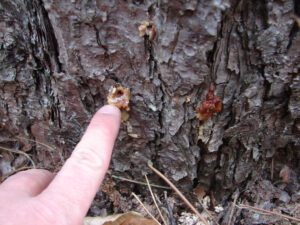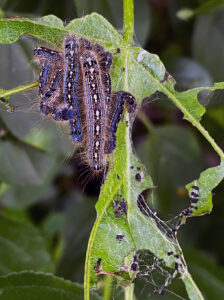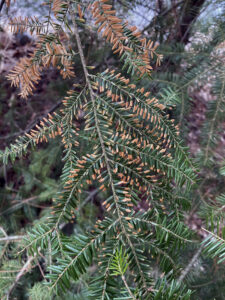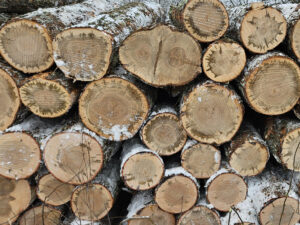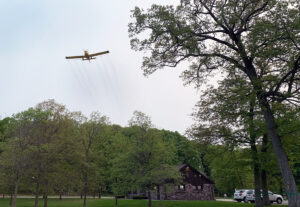
Young spruce budworm larvae begin feeding as buds break, causing the new growth to crook where feeding damage occurs. Webbing is also common. / Photo Credit: Linda Williams, Wisconsin DNR
By Linda Williams, Wisconsin DNR Forest Health Specialist
Linda.Williams@wisconsin.gov or 920-360-0665
From early indications, the spruce budworm outbreak in some areas of northern Wisconsin is preparing to continue for yet another year.
During the third week of May, expanding buds on balsam fir trees were already showing damage from the tiny larvae.

